Capital Boulevard ugly? Not always. Photographer captures beauty on seedy Raleigh strip
Two years ago, Ben Harris woke from a restless sleep, picked up his camera and went for a pre-dawn walk down Capital Boulevard — ambling Raleigh’s used-car corridor with explorer’s eye.
In the quiet morning, he found a warm light glowing through the window of a coin-op laundry.
Down the street, he noticed how telephone poles reflected in the mud puddles of a pawn shop parking lot, and how the neon gleam from a nearby Burger King formed a sort of sunrise.
So he shot a few frames.
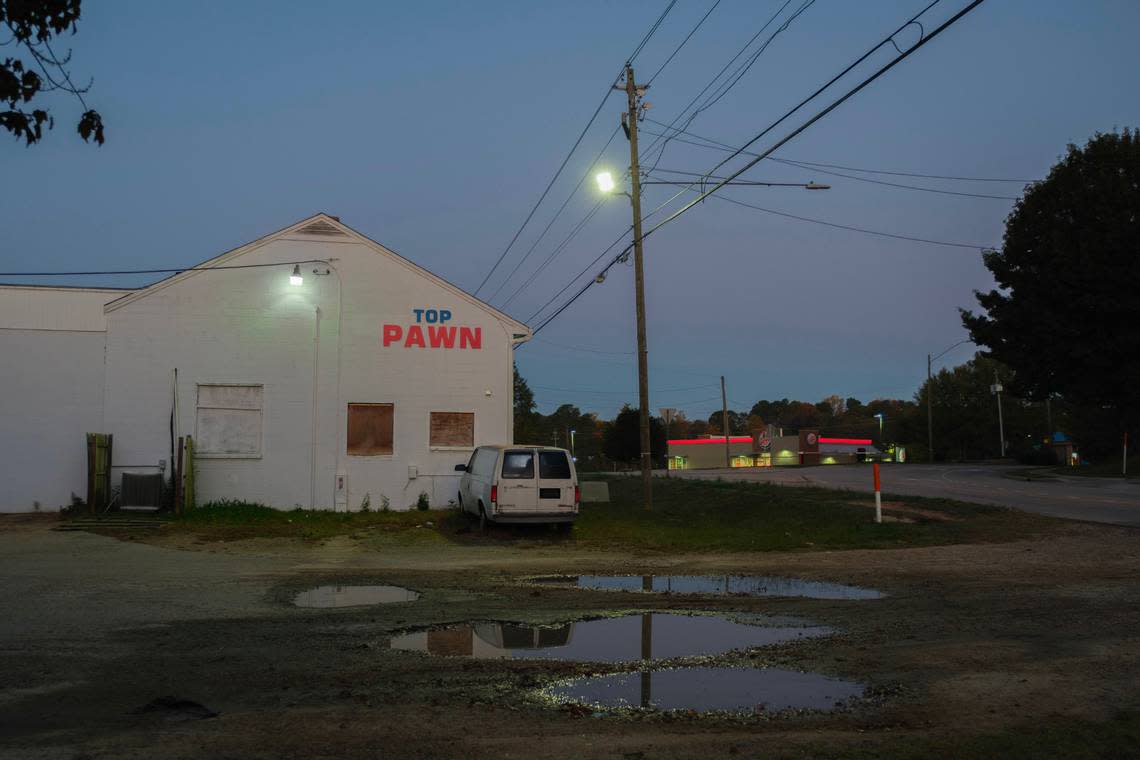
And when he got home, he casually posted his discoveries on Instagram, quickly drawing an online audience.
“I thought this was from another country,” one of them raved. “I didn’t know this was Raleigh.”
And from there, Harris began the One Street Project — a two-year effort to find beauty in used tire shops, extract meaning from an abandoned Rite Aid and dignify the mannequins in a lingerie shop window.
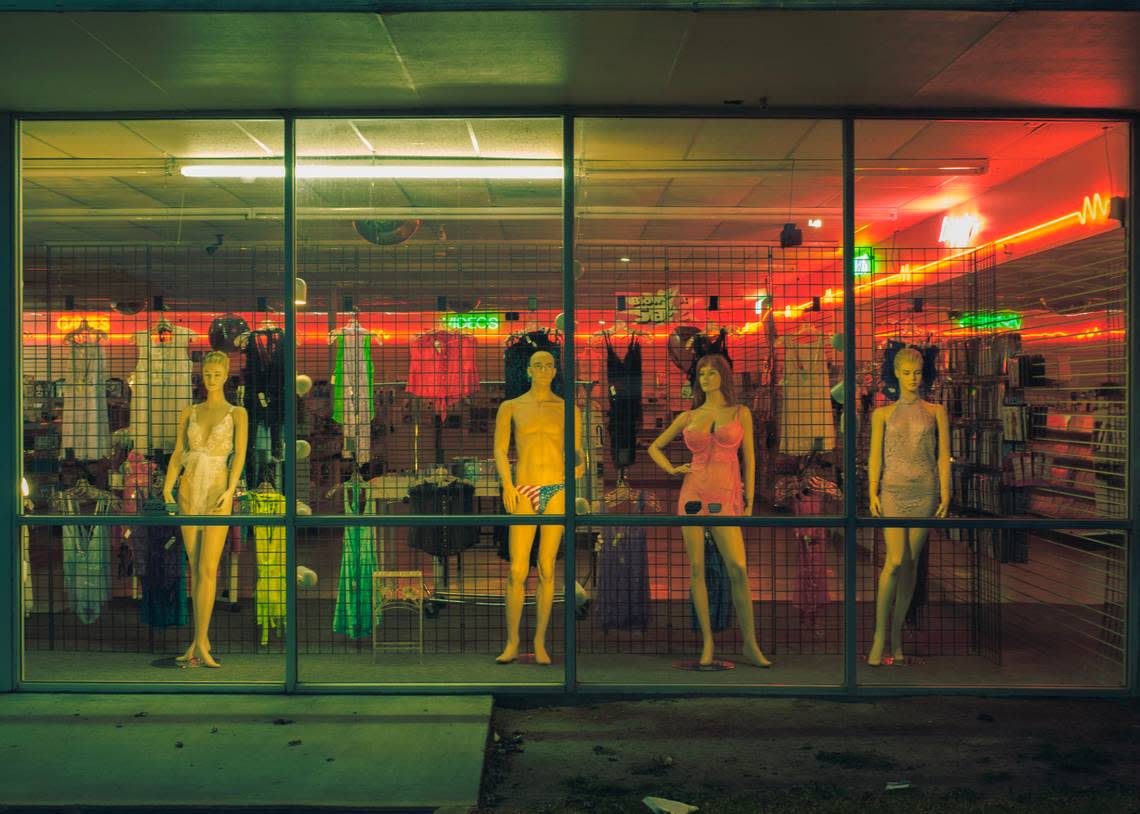
Through his eyes, the street most would rank among Raleigh’s ugliest takes on an insistent quality, demanding not only to be noticed but exalted for its too-human defects — the loneliness in a row of unrented UHaul trailers, the desperation in a delivery truck with a blown-out tire that still advertises lowest prices guaranteed.
‘Objects of beauty’
Everywhere on Capital Boulevard is the mad rush to get nowhere important and danger in the simple act of crossing the street, yet Harris stops to uncover a church pew discarded on the roadside — a spare tire propped for an arm rest.
“I want Capital Boulevard to be redeemed through this project,” he said. “I want people to consider things in their every life, things that they take for granted, as objects of beauty.”
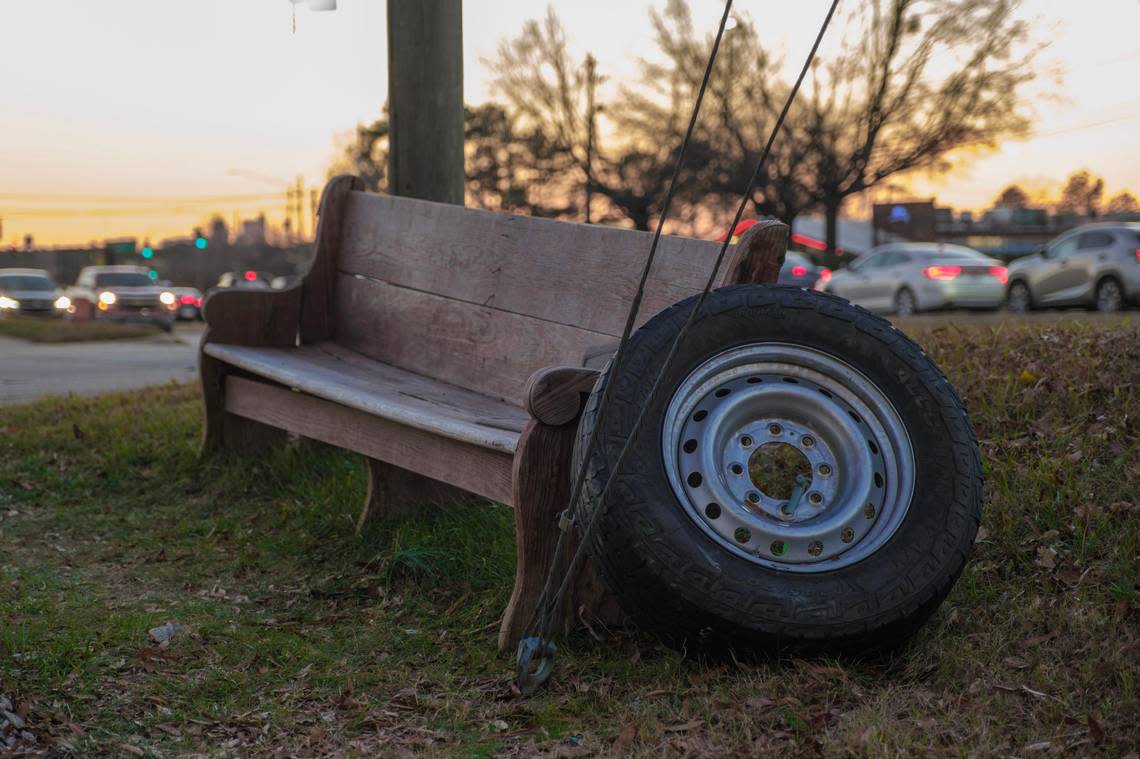
A 43-year-old designer and native of Buffalo, Harris lives a short walk from Capital’s intersection with Trawick Road — a stretch he describes as the worst while actually meaning the most Capital of Capital.
He works in graphic design and web development, but his shutterbug hobby started in high school photo club, when the class took a field trip to an abandoned mansion.
“I focused, for some reason, on this pencil sharpener on the wall,” he said.
His eye developed further on a recent trip to Australia, where rather than swoon over kangaroos, he delighted that Burger Kings there are called Hungry Jack’s but the logo is the same.
“I found myself taking pictures of that,” he said.
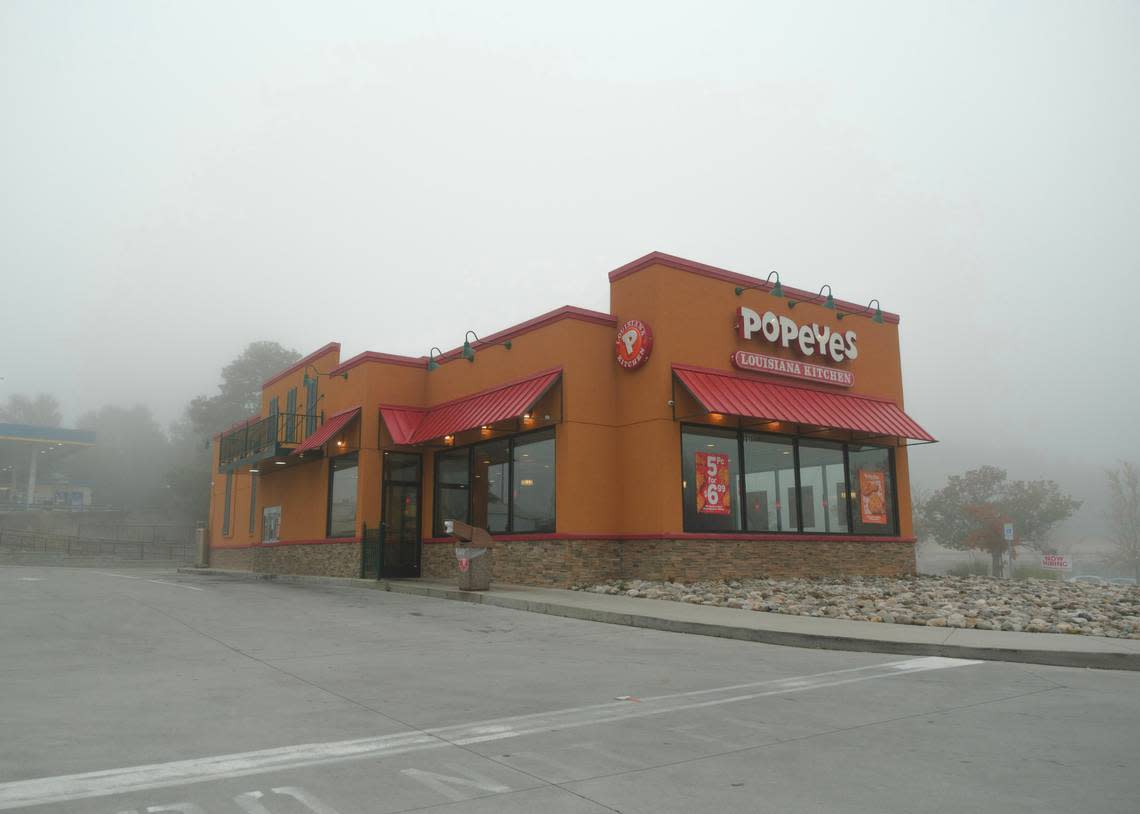
So on Capital, he finds that same detail in places people keep their aesthetic sensors switched off: the masonry at Chuck E Cheese’s, the alarming red light from a Cash Points booth at night, the majestic upswing of the elephant’s trunk at Adventure Landing.
Burger King as art
There is never an ironic wink in his pictures, nor a celebration of the mundane world for its own sake. To appreciate Harris’ work is to know that beauty hides in exhaust pipes, and that a broken window tells a story.
“I want it to look like art,” he said. “Even if it’s just a Burger King.”
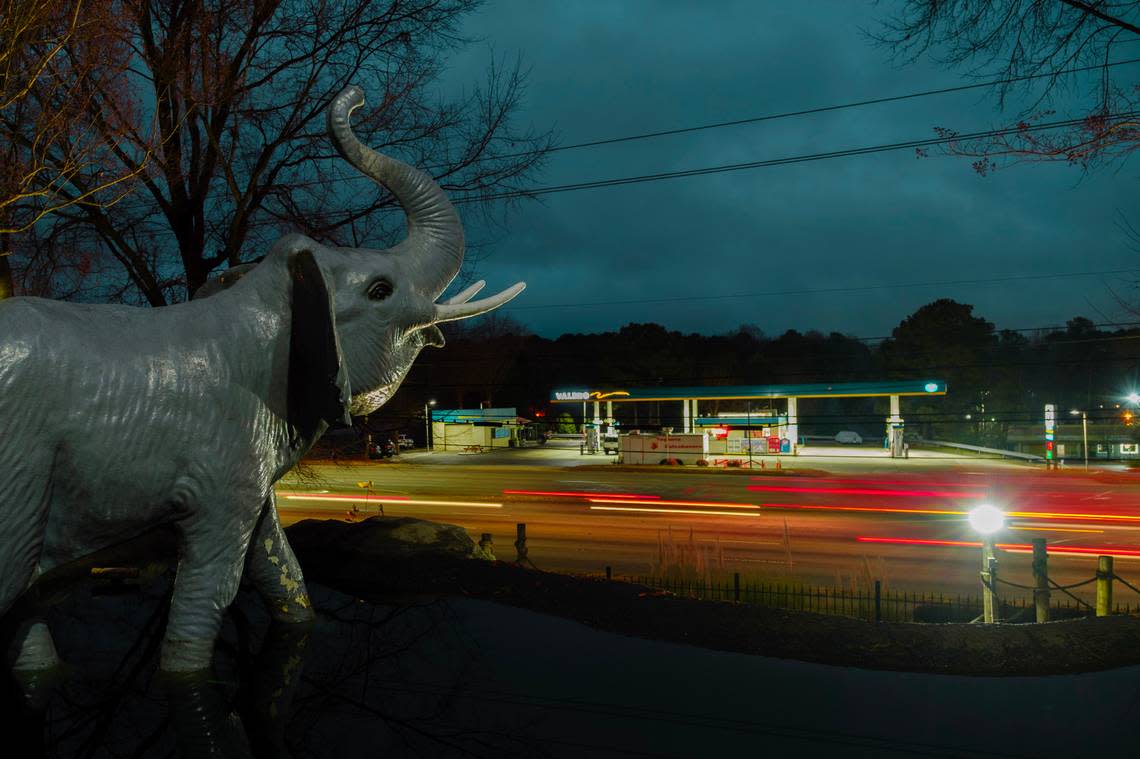
Capital Boulevard serves its purpose almost exclusively for cars, and most people experience it behind a steering wheel with the stereo blasting, wishing they were somewhere else.
But any street changes its face for people who dare to walk it rather than drive, and on foot with a camera, Harris has bumped into the inhabitants of the street so many disdain.
Once, shooting along some railroad tracks in dim light, he got startled by a crowd coming up behind him and quickly departed — snapping a picture just as he grabbed his tripod and scurried away.
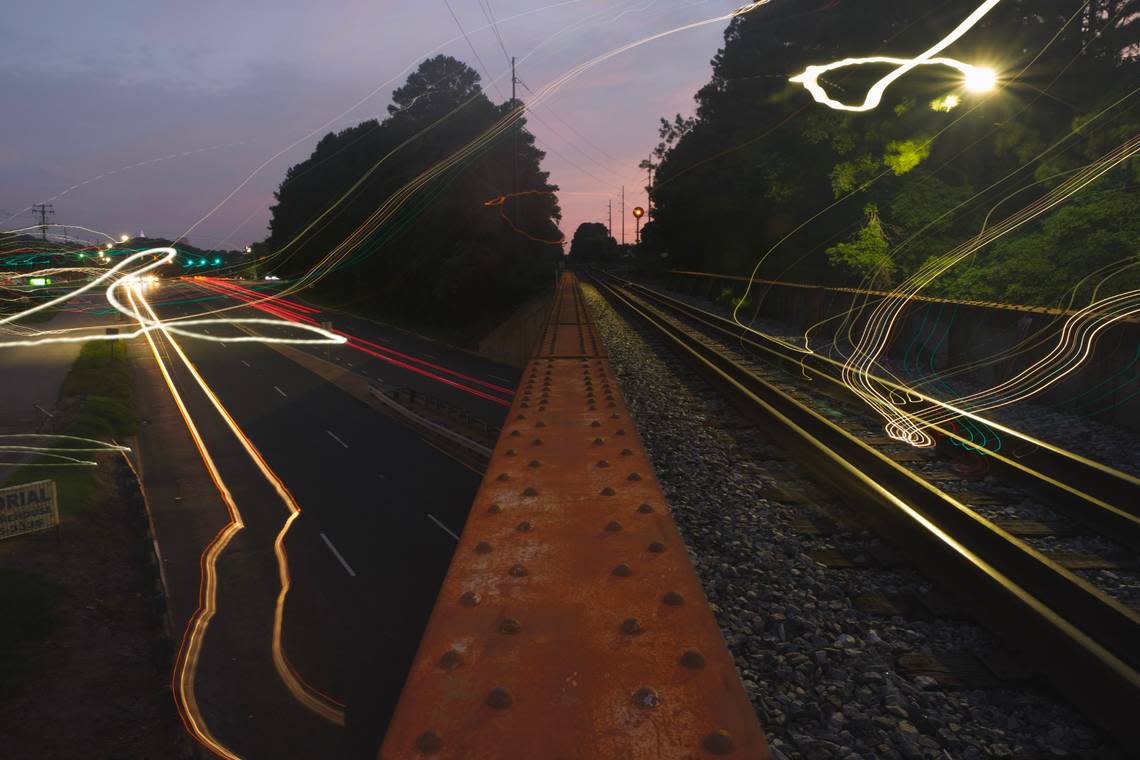
Another time, he passed a self-storage business and spotted a family coming out of the unit where they’d clearly been living.
His project aims to capture the street, not the people passing through, so he rarely takes portraits. But one time he stopped to photograph a road crew and got accosted by a worker named Lorraine.
“I’m an artist,” he explained.
“Yeah?” she asked. “Can you take a picture of me?”
He shoots mostly with a FujiFilm X-system camera, sometimes on film but mostly digital. He likes early-morning light. He goes when the mood strikes rather than on a schedule, not wanting to get bored.
And when the project is done, he’d like most for the work to be shown in a gallery, where Raleigh could see the pictures that struggle for attention in their windshields — the temples it built, the marketplace it inhabits and the postcard images it most closely resembles.
